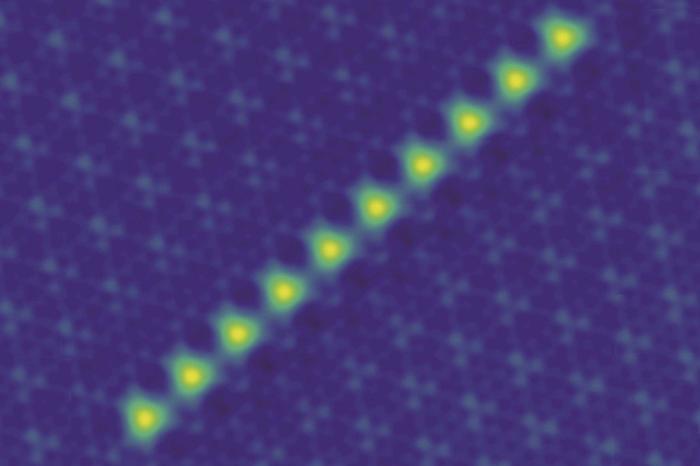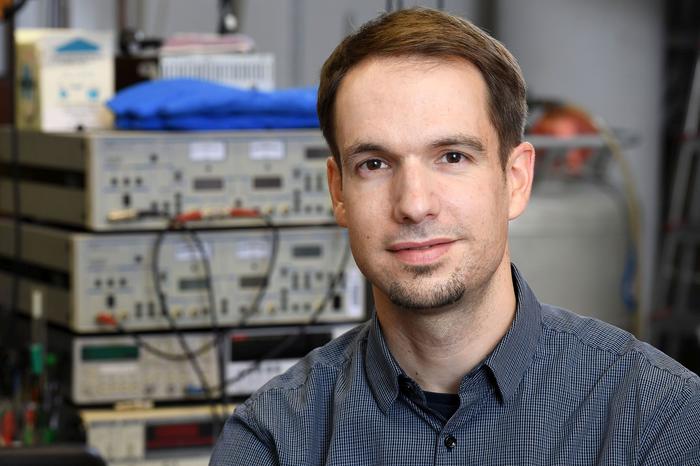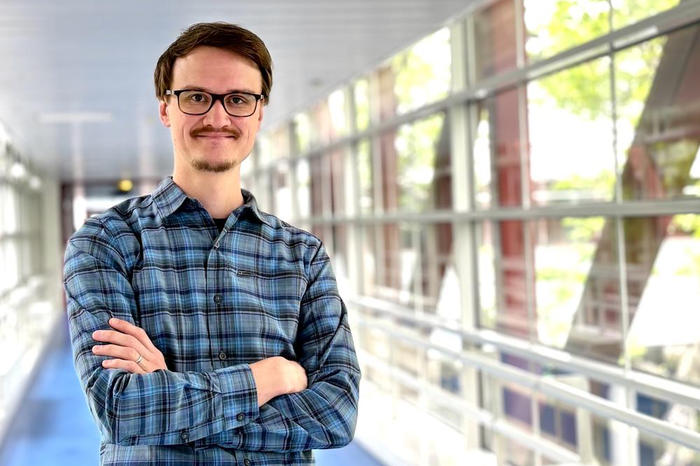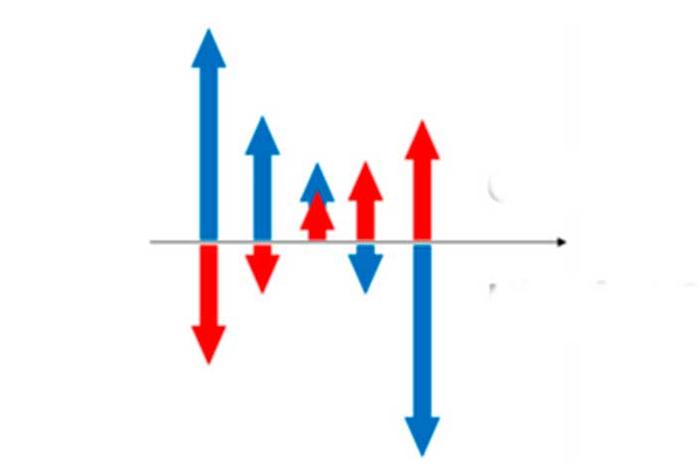Nanophysics and Surface Science
Chain of iron atoms on the superconductor NbSe2 created by manipulating individual atoms using a scanning tunneling microscope
Image Credit: Research Group Franke
At dimensions of a few nanometers and below, the laws of quantum mechanics dominate the properties of matter and give rise to surprising magnetic, optic, and electronic effects.
In Nanophysics and Surface Science we analyze these various properties using spectroscopic methods and create new composite materials. We carry out fundamental theoretical and experimental research in order to apply the obtained knowledge for the development of new materials and nanotechnologies.
Research Focus
Our department looks back on several decades of expertise in Nanophysics and Surface Science. Within these interdisciplinary research fields, we work on systems and materials of atomic dimensions, for instance, molecules that behave like switches, transporters and nanomotors, or single atomic layers, e.g., two-dimensional carbon (graphene) or quasi-one-dimensional carbon nanotubes.
We grow epitaxial thin films on crystalline surfaces with atomic precision and manipulate individual atoms into desired structures using scanning probe techniques. Quantum-mechanical effects dictate the properties in all of these low-dimensional nanostructures, which we want to study and understand on a fundamental level.
Fundamental Questions in Nanophysics and Surface Science
- How can we understand the underlying quantum mechanical effects occuring in these systems of atomic size, and can we purposefully utilize them?
- How do electronic and optical devices behave when reduced to atomic dimensions?
- Which new emergent properties (i.e. superconductivity, topological phases, phase transitions) arise in complex solid-state systems?
- How can we develop functional nanomaterials with atomic precision?
Our department’s research groups address these challenges in various research fields.
Research Fields
Molecule Surface Interactions: Functional molecules are brought onto surfaces and form the building blocks of molecular electronics.
Magnetic Surfaces: In spintronics, the electrons’ spin is used as information carrier within magnetic nanoscale structures.
Low-Dimensional Materials: Quantum-mechanical phenomena in two-dimensional systems and their heterostructures are investigated by electronic and optical transport measurements.
Our Research Methods
- Scanning Tunneling and Atomic Force Microscopy and Spectroscopy
- Photoluminescence, Fluorescence, and Raman Spectroscopy
- Photoemission (Time-, Angle-, and Spin-Resolved) and Photoelectron Microscopy
- Near-Field Microscopy
- X-Ray Spectroscopy (Absorption and Dichroism)
- Ultrafast Pump-Probe Spectroscopy
- Density Functional Theory (DFT)
- Transport and Scattering Theory
- Modelling of Non-Equilibrium States and their Properties


















